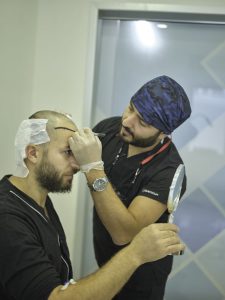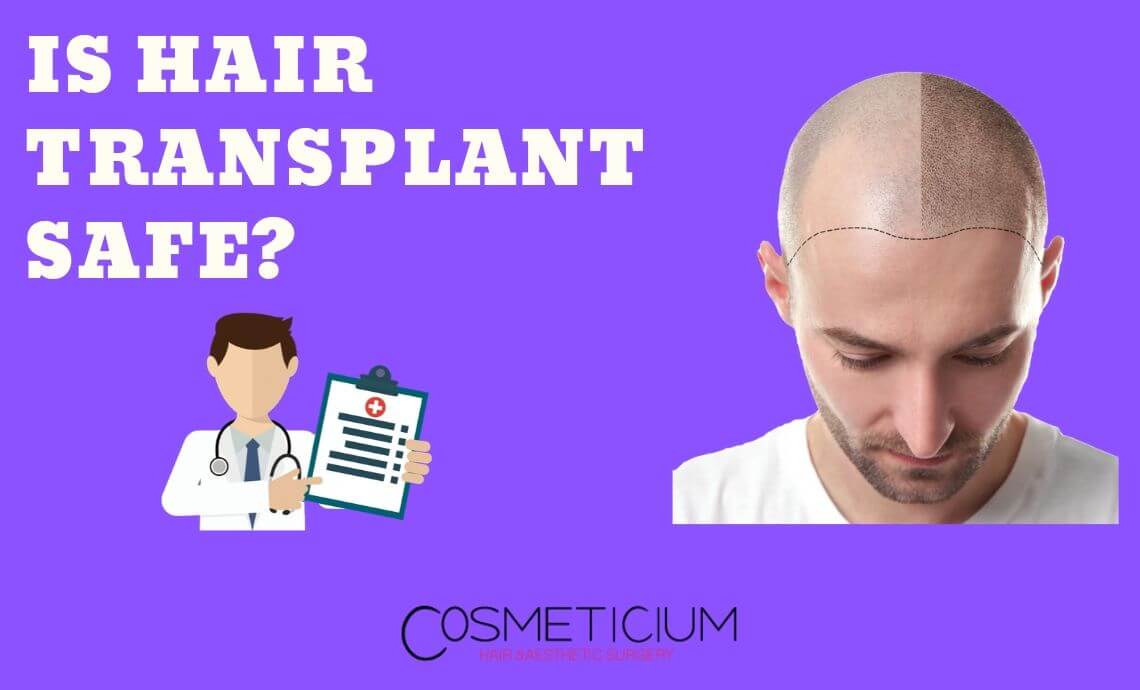Hair transplant surgery is simply a process of removing a scalp graft from the specific spot on the head of the patient which is containing sufficient hair. The spot from where the scalp has been removed is known as donor spot. However, the place where new hairs will grow is known as the recipient. Usually, hair transplant surgeries are being conducted at the office of a doctor or in a hospital. Even more, local or general anesthesia will also be used in this. However, the use of anesthesia depends on the extent of the hair plant surgery which is obviously dependent on the number of grafts that will be made and how much time the surgery will take to be done.
Table of Contents
Is Hair Transplant Safe or Not?
However, when it comes to hair transplant surgery than most of the people out there want to know whether it is safe to consider this surgery as a permanent solution of hair fall or there are any pitfalls that are associated with this process. Well, the shortest and simplest answer to the question is hair transplant safe, is yes. It is because hair transplant surgeries are being done by professionals, and effective tools are being used in the process to make that safer. However, still, as with every other surgical process, there are some risks that are involved in these processes. Although the risks linked to hair transplant surgeries are quite minimal which we have explained here in detail for your better understanding.
Types of Hair Transplant Surgeries
The patients who undergo from the hair plant surgery can expect to undergo from any of the following hair transplant techniques:
DHI
DHI is also known as Direct Hair Implantation, in which hair felicities will be taken from the donor site to transplant in the recipient spot directly. DHI needles will be used to implant hair in the recipient site in this process.
FUE
FUE is also known as Follicular Unit Extraction, which is the most popular technique of hair transplant. In this technique, micro-holes will be created in the recipient spot to implant the scalp. However, the backside of the head will be shaved to get grafts from the scalp. The surgeon will carefully collect hair felicities to grow in the recipient spot.
However, the only process which is different in both of these techniques is creating micro holes. Because in FUE canals are being created manually, while in DHI, DHI needles are being placed directly. However, the process of grafting is the same in both of the hair transplant processes. Well, the surgery can take up to 8 hours. Even the patient may need to go through this surgery again if he is not satisfied with the thickness of the hair.
Risks Associated with Hair Transplant
Although hair transplant is safer to consider. However, still, there exist some minimal risks associated with these processes. However, it is always essential to understand the problems which are associated with this. It is because this can help the patients to dispel their fears regarding this. Even more, patients will be able to expect a healthy and good outcome from their hair transplant surgeries. Most importantly, knowing about the potential risks of hair transplant surgery will also help the patients to have a clear and honest conversation with their surgeon.
So, we must have a look at the following risks to get a better idea about things in the best possible way.
Inflammation
When it comes to hair transplant surgery the experiencing inflammation is quite common as with every other kind of surgery. As the hair of the patient will start to come in, inflammation will start to occur. However, if the patient is experiencing folliculitis, which is a type of hair follicles infection then this is a little more intimidating and can be a cause of concern here. However, in the case of the inflamed scalp, usually, surgeons prescribe an antibiotic. Intaking recommended medicine from your surgeon can help you to get rid of folliculitis and ultimately, your inflammation will subside. Along with this cold compressor on the affected area of the head can also work great to lessen inflammation in a more effective way.
Hair Loss
 After getting done with hair transplant surgery, patients may experience a slight hair loss. This slight hair loss may refer to a shock loss. However, it is highly important for patients to understand that this slight hair loss is temporary. You will get rid of this problem within a few days with ease. So, there is nothing to be worried about this.
After getting done with hair transplant surgery, patients may experience a slight hair loss. This slight hair loss may refer to a shock loss. However, it is highly important for patients to understand that this slight hair loss is temporary. You will get rid of this problem within a few days with ease. So, there is nothing to be worried about this.
Tender Head and Scalp
After having a hair transplant surgery, a patient may experience that his head and scalp are quite tender. Well, there is nothing to be worried about this. It is because this is quite a normal situation that you may be experiencing because of DHI needles or the process of creating micro holes as per your selected type of hair transplant surgery. Your surgeon may prescribe you an antibiotic or a painkiller for this to ward off possible infection.
However, medicines that have been prescribed for inflammation can also work effectively to alleviate pain or discomfort of the tender scalp as well as can also heal the swelling at the graft site.
Additional information to consider:
Although it is clear that this surgery is safe to experience but still there can be some reactions that can be unique to some patients. For example, if someone is using prescribed medicines like beta-blockers or blood thinner to treat the problem of high blood pressure, then this is really a cause of concern. It never means that hair transplant surgery can be determinantal for that person, but it is always necessary for you to discuss your medical history with your surgeon before going through the process of hair transplant surgery.
Whenever you are considering hair transplant surgery as a solution of your hair thinning or hair fall problem then it is always necessary for you to promote honest and clear discussion with your surgeon. Better communication between you and your surgeon will make sure to bring the best outcomes in a more amazing way.


